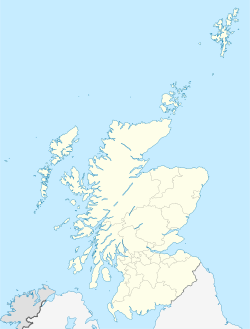Top Qs
Timeline
Chat
Perspective
British Rail Class 27
Class of 69 1250hp diesel-electric locomotives From Wikipedia, the free encyclopedia
Remove ads
The British Rail Class 27 is a diesel locomotive built by the Birmingham Railway Carriage and Wagon Company (BRCW) during 1961 and 1962. They were a development of the earlier Class 26; both were originally classified as the BRCW Type 2. The Class 27s were numbered D5347-D5415.[1]
Remove ads
Working life
Summarize
Perspective

Original allocations were D5347–D5369 to Glasgow Eastfield, D5370–D5378 to Thornaby and D5379–D5415 to London Cricklewood for Tilbury Boat trains and Cross-London freight services. In the period September to December 1963, some of the Cricklewood allocation were transferred to Leicester and the Thornaby allocation was also nominally transferred to Leicester to join them in December 1965.
Traffic changes, combined with reallocation of Class 25s, led to the gradual transfer of the Leicester and Cricklewood locomotives to Scotland during 1969; this concentrated the whole class within Scotland and being part of the replacement fleet that allowed the withdrawal of the poorly performing Clayton Class 17 locomotives from traffic. For many years, they were extensively used on the West Highland Line.
By September 1986, the final vacuum brake only locomotives had been withdrawn, regular duties on passenger services had ceased and only twenty-one of the class remained, allocated entirely to Eastfield depot. A mass withdrawal in July 1987 due to the presence of blue asbestos left 27008 as the last in service. Its final working was on 13 August and the loco was officially withdrawn on 19 August 1987. The Class 27s were actually outlived by the older Class 26s, whose less powerful engines were more reliable.
Remove ads
Sub-classes
- 27/0: Locomotives as built with steam heating (excluding 27024–27031)
- 27/1: Locomotives converted in 1971–1973 for push pull operation, renumbered back to 27/0 after conversion starting in 1982.
- 27/2: Locomotives converted in 1973–1976 with Electric Train Heat, renumbered back to 27/0 after conversion starting in 1982.
Edinburgh-Glasgow push-pull operation
Summarize
Perspective
By the late 1960s, the Swindon-built inter-city DMUs operating the Edinburgh Waverley - Glasgow Queen Street express service were becoming unreliable. In 1970, the decision was made to replace them with locomotive-hauled carriages. So between 1971 and 1973, twenty-four Class 27s were fitted-up with dual (vacuum and air) brakes and reclassified Class 27/1, while 36 Mark 2 carriages (7 brake second opens, 22 open seconds and 7 corridor firsts) swapped their vacuum-operated shoe brakes for air-operated disc brakes and were though-wired with Blue Star control cables to enable top and tail push-pull working. It was later decided that as the Mark 2 stock was dual (steam or electric) heated, to convert half the 27/1 fleet to electric train heat, by replacing the train heating boiler with a Deutz 8-cylinder, air-cooled diesel engine and alternator. The conversions were then classified as Class 27/2 and were used on one end of the train, with a 27/1 on the other.
The very intensive 90 mph (140 km/h) push-pull service was demanding on the locomotives and reliability started to suffer. The 27/2s appeared prone to fire damage, especially from their electric train heating alternators. The push-pull sets were replaced in 1979 by single Class 47/7s at one end of a rake of Mark 2 carriages and a DBSO. The Class 27/1s and 27/2s were then renumbered to 27/0 and could often be found on Edinburgh-Dundee semi-fast passenger services, until their replacement, briefly by Class 101 and subsequently by Class 150 Sprinter diesel multiple units (DMUs) in 1987, whilst the remainder were largely used on freight.
Accidents and incidents
- On 30 June 1962, locomotive D5386 was in a minor collision with a diesel multiple unit at Cricklewood carriage sidings, due to confusion over a hand signal. The engine is now preserved and stored at Barrow Hill Roundhouse.[3]
- On 25 August 1965, locomotive D5383 was heading a freight train that collided with the rear on another freight train at East Langton. It was taken to Derby Works for evaluation, but was withdrawn in January the following year.[4]
- Locomotive 27 044 was severely damaged by fire before 5 September 1980. It was consequently withdrawn and scrapped.[5]
Remove ads
Fleet list
Remove ads
Preserved locomotives
Eight examples of the class have been preserved at various heritage railways in Great Britain.[9]
Two members of this class were rescued from Vic Berry's Scrapyard in the 1980s:
- 27001 at the Bo'ness and Kinneil Railway
- 27066 on the Dean Forest Railway
- D5401 (27056) at the Great Central Railway
Remove ads
Model railways
During the 1980s, Minitrix produced Class 27 models in British N gauge. In 2013, Dapol introduced DCC-ready models of 27032 in BR blue and D5356 in BR green, also in British N gauge.[12][13]
Notes
- Webb gives DEL256 as being numbered D5413, 27 118, 27 212 [8]
References
Further reading
External links
Wikiwand - on
Seamless Wikipedia browsing. On steroids.
Remove ads













